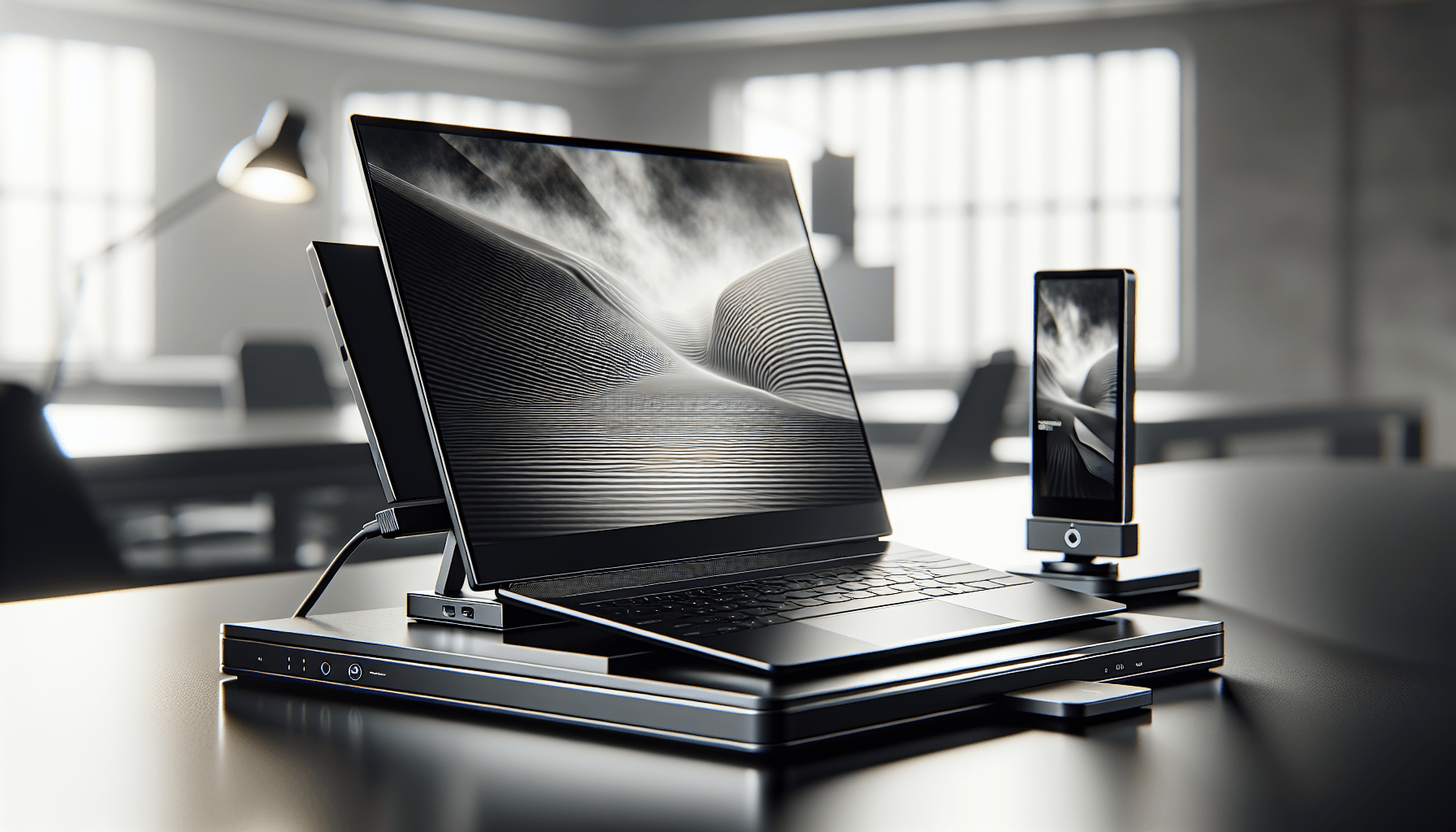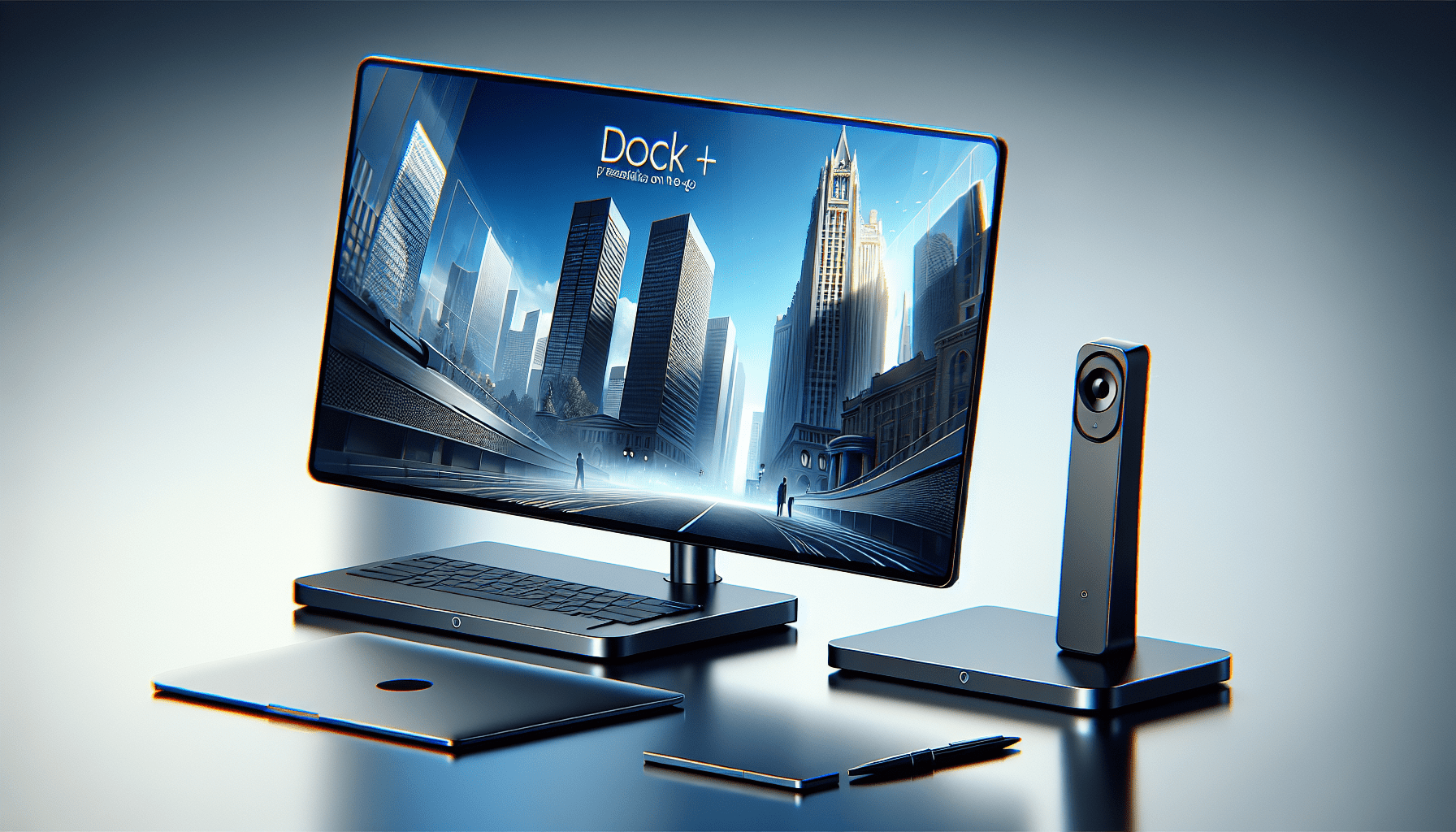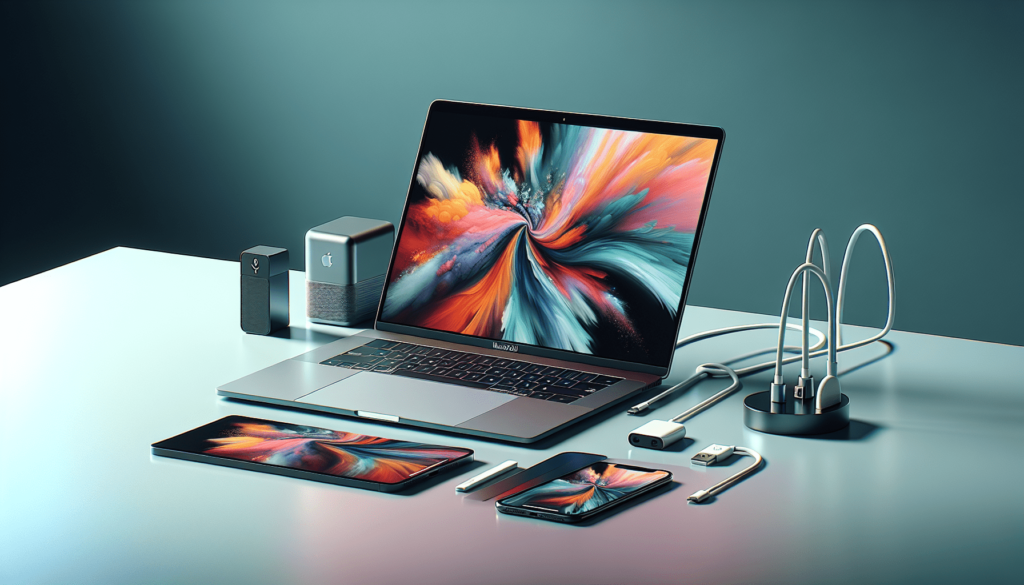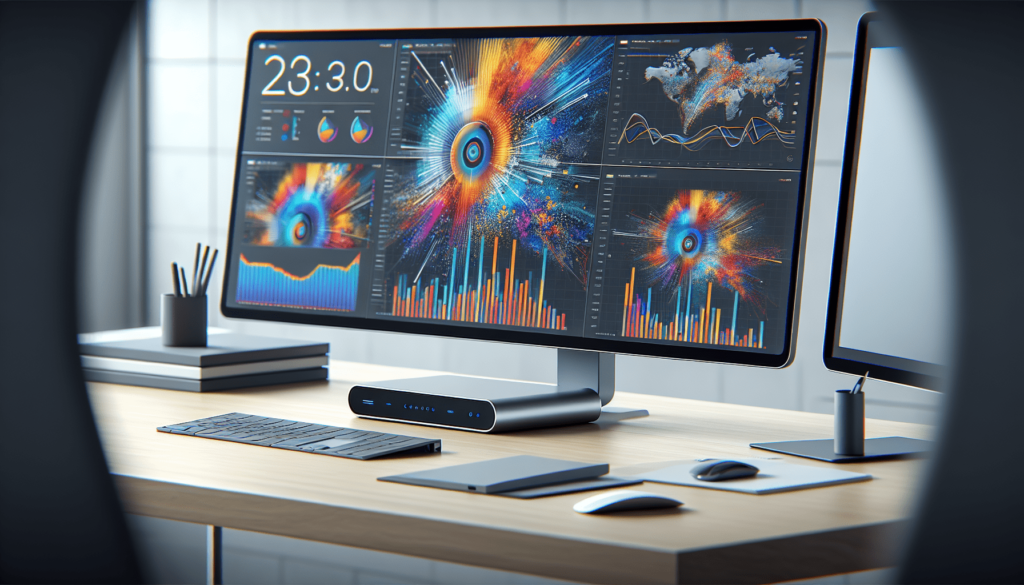Have you ever found yourself scrambling to set up a presentation on-the-go, only to wish there was a simpler, more effective way to make an impression? We’ve been there too, lugging around projectors, cables, and laptops like we were Sherpas on the way to the digital summit. In this always-connected world, we need the right tools to navigate those spontaneous presentation scenarios without breaking a sweat or swearing like a sailor in frustration.
Our adventure today takes us into the evolving world of “Dock + Display,” a concept that’s all about streamlining the process of giving presentations, especially when we’re far from the comforts of our office setup. Let’s unravel the mysteries of these nifty solutions that promise to make our lives easier, our presentations smoother, and our technology lighter.
Understanding Dock + Display Solutions
Dock + Display solutions are essentially about compatibility and convenience. When we think about presentations, we picture not just the words or images we share but how seamlessly we bring them to life in front of our audience. These solutions are the bridge between our messages and how we deliver them visually.
What is Dock + Display?
Imagine a perfect world where connecting your device to a larger screen is as easy as plugging in your phone charger. That’s the promise of Dock + Display. It involves using docking stations and adaptable displays to connect our laptops, tablets, or even phones to an external display, expanding our digital workspace and allowing us to present effectively.
It’s about taking the ordinary nuisance of using multiple connectors and adapters and replacing them with a singular, streamlined device that manages this for us. Portable docks serve as the intermediary between our devices and the display, ensuring that our presentations go off without a hitch.
Why Do We Need Dock + Display Solutions?
Consider the chaos of different cables and adapters – HDMI, VGA, USB-C – and how they clutter our bags and weigh us down. Dock + Display solutions reduce this chaos into a single device that offers various ports, serving multiple connection needs. It’s the Swiss Army knife in our tech inventory, helping us connect, charge, and present efficiently wherever we are.
These solutions appeal directly to our needs for adaptability, ease-of-use, and reliability, especially when we’re presenting in unfamiliar locations. Think about traveling for a business meeting and encountering a display system that doesn’t sync with your device; that’s where a Dock + Display becomes indispensable.
Types of Docking Stations and Displays
When it comes to choosing the right tools for our presentations, understanding the various types of docking stations and displays is essential. Each option offers different advantages and considerations based on our unique needs.
Docking Stations
Docking stations come in various profiles, from minimalist and portable to full-sized and stationary units. Here’s how they break down:
-
Portable Docking Stations: Lightweight and easy-to-carry, these are perfect for those of us who are always on the move. They usually provide the basic ports to connect our devices, such as USB, HDMI, and Ethernet. They ensure we’re never caught off guard in any presentation scenario.
-
Full-sized Docking Stations: If we frequently present in a set location but want the flexibility of a laptop, a full-sized dock is a robust choice. It often offers additional ports, including audio input/output, multiple display outputs, and sometimes charging capabilities for our laptops.
Let’s compare these two types:
| Feature | Portable Docking Stations | Full-sized Docking Stations |
|---|---|---|
| Portability | High | Low |
| Number of Ports | Few | Many |
| Setup Complexity | Simple | Moderate |
| Ideal Usage | On-the-go presentations | Stationary presentation setups |
Display Options
The choice of display enhances our overall presentation experience. We can break these down into:
-
External Projectors: While somewhat traditional, projectors with modern upgrades are still invaluable for large audiences. Many now support wireless connectivity, making them a solid choice if we’re presenting to a sizable group.
-
Portable Monitors: These are game-changers for one-on-one or small group presentations. Lightweight and often powered by our devices, portable monitors offer flexibility and ease when we’re on the road.
-
Smart Displays: These are sophisticated devices with built-in connectivity features. They can operate wirelessly with our devices, reducing the tangle of cables and providing a direct line of communication from our laptop or phone to the display.

The Benefits of Using Dock + Display Solutions
Combining docking solutions with additional displays provides clear advantages in both business and personal settings. Here, we outline the key benefits:
Convenience and Efficiency
One of the most significant advantages is the efficiency and simplicity these devices bring us. With fewer cables to handle and a streamlined connection process, we can focus more on what we need to present rather than how we get it on the screen.
Enhancing Professionalism
Nothing says ‘I’m ready’ more than setting up your presentation within seconds, without fumbling through cables or shouting across the room for tech help. Dock + Display solutions ensure that we maintain an air of professionalism even before we start speaking.
Versatility in Connection
These solutions are compatible with a wide range of devices and operating systems. Whether we’re a Mac enthusiast, a Windows power user, or a Chromebook crusader, Dock + Display devices cater to our connectivity needs, bridging the gap between old and new tech.
Improved Portability
The portable nature of many docking solutions means we no longer have to compromise on quality for the sake of travel. They slip easily into our bag next to our laptop and are ready at a moment’s notice to transform any environment into a mini-boardroom.
Future-Proofing Presentations
With technology evolving at breakneck speed, it’s essential to choose solutions that won’t become obsolete too quickly. Dock + Display systems often support the newest connection types like USB-C and Thunderbolt 3 while also offering support for older ports, making them a sustainable investment.
Top Dock + Display Solutions on the Market
We’ve scoured the technology landscape to uncover some of the top Dock + Display solutions available. Let’s take a look at products that combine portability, performance, and price.
Dell Dock WD19
This is a powerhouse for those needing a full-sized docking solution. It offers:
- USB-C connectivity
- Multiple video outputs (HDMI, DisplayPort)
- Fast charging capabilities
- A robust build ideal for stationary use
Perfect for workplace setups where we might need robust capabilities without frequent movement, the Dell Dock WD19 combines connectivity with energy efficiency.
Anker PowerExpand Elite
Anker’s portable docking station is a favorite for those of us on-the-go. With its sleek design, it provides:
- Dual 4K HDMI
- USB-C power delivery
- SD card reader and more
Anker continues to strike a balance between performance and portability, making it a go-to for frequent travelers.
ASUS MB16AC Portable Monitor
For supplemental display needs, the ASUS MB16AC offers:
- A lightweight, portable monitor option
- USB-C connectivity for single-cable simplicity
- A kickstand smart cover, transforming any space into a temporary meeting room
ASUS’s attention to the little details ensures we’re ready to present at the drop of a hat.

Tips for Effective Presentations with Dock + Display
Having the right technology is only part of the equation. Effective presentations also rely on our ability to connect and convey ideas convincingly. Here are a few tips to make the most of our Dock + Display setup:
Testing Ahead of Time
Whenever possible, we should test our Dock + Display setup before the actual presentation. Familiarizing ourselves with the equipment ensures a smooth experience, eliminating surprises.
Keeping It Simple
With various connection possibilities, we might be tempted to over-engineer our presentations. Sticking to straightforward setups prevents technical hiccups and keeps audiences focused on our message rather than the medium.
Cable Management
Even with advanced Dock + Display solutions, managing our cables effectively prevents distractions. Use cable clips or velcro ties to neatly bundle extra cables, keeping the presentation area tidy and professional.
Engaging with the Audience
Remember, the technology is there to enhance our message, not overshadow it. Maintain eye contact and integrate natural pauses to invite audience interaction, ensuring technology doesn’t become a barrier to engagement.
In a world where first impressions can make or break deals, mastering the art of presenting is crucial. By equipping ourselves with the right Dock + Display solutions, we simplify the technical aspects of our presentations, allowing our words to shine without distraction. Gone are the days of frantically searching for missing cables or incompatible adapters; instead, we stride confidently into any room, ready to tell our story with clarity and style. Perhaps it’s time we started packing smarter, freeing space in our minds and bags for the things that truly matter: our ideas.



